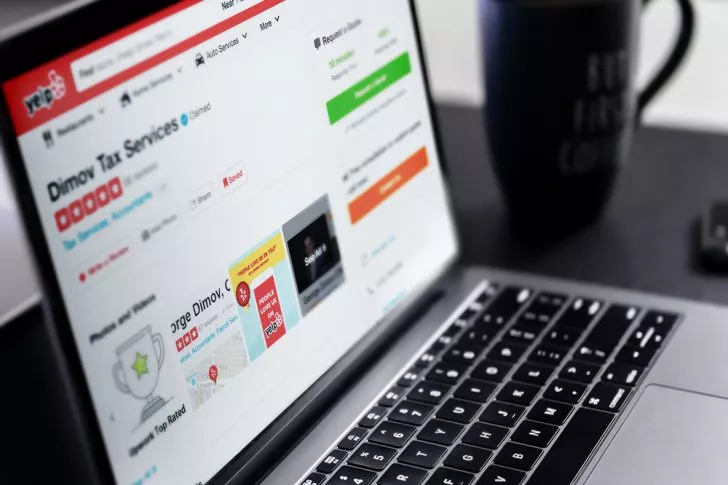Personal Property Exchange
One significant provision that offered substantial tax benefits prior to 2018 was the like-kind exchange for personal property, governed under Section 1031 of the Internal Revenue Code (IRC). This provision allowed taxpayers to defer capital gains taxes when they exchanged personal property for other like-kind property. The like-kind exchange mechanism was a strategic tool for business owners and investors. It enabled them to upgrade their assets, improve operational efficiency and defer tax liabilities, thus preserving capital for reinvestment.
Before the enactment of the Tax Cuts and Jobs Act (TCJA) of 2017, Section 1031 applied not only to real property but also to a wide range of personal properties. These included machinery, equipment, vehicles, collectibles and other tangible assets used in trade or business. However, with the TCJA’s amendments, the scope of Section 1031 was narrowed significantly, restricting its application solely to real property exchanges after December 31, 2017. Understanding the regulations, process and implications of personal property exchanges prior to this legislative change is crucial for taxpayers who engaged in such transactions and need to ensure compliance with historical tax obligations.
This article aims to provide a comprehensive overview of personal property exchanges as they were regulated. It will delve into the specific legal framework, outline the obligations for taxpayers and describe the procedural steps involved. By exploring the nuances of this tax provision, business owners and investors can gain a deeper understanding of the benefits and requirements associated with personal property exchanges and how to leverage professional services for optimal tax planning and compliance.
Personal Property Exchange under IRC Section 1031 permitted the deferral of capital gains taxes when like-kind properties were exchanged. “Like-kind” broadly referred to properties of the same nature or character, irrespective of grade or quality. Before 2018, this included personal properties such as machinery, equipment, vehicles and other tangible assets used in a trade or business.
Before and After 2018
The Tax Cuts and Jobs Act (TCJA) of 2017 brought significant changes to the tax code, including notable modifications to the like-kind exchange rules under Section 1031 of the IRC. Understanding these changes is crucial for taxpayers who have engaged in or are considering like-kind exchanges. Below is an in-depth comparison of the rules governing personal property exchanges before and after 2018.
Personal Property Exchange Before 2018
- Broad Definition: Before 2018, Section 1031 applied to a wide array of properties, including both real property (real estate) and personal property.
- Types of Personal Property: Personal property covered under this provision included machinery, equipment, vehicles, livestock, artwork and other tangible business assets.
- Broad Interpretation: The definition of “like-kind” was interpreted broadly. For personal property, the exchanged properties needed to be of the same nature or character but not necessarily of the same quality or grade. For example, an airplane could be exchanged for another airplane and business equipment could be exchanged for similar equipment.
- Capital Gains Tax Deferral: The key benefit of Section 1031 exchanges was the deferral of capital gains taxes. By reinvesting in like-kind property, taxpayers could defer the recognition of capital gains, thus delaying the tax liability.
- 45-Day Identification Period: Taxpayers had 45 days from the sale of their property to identify potential replacement properties.
- 180-Day Exchange Period: The exchange had to be completed within 180 days of the sale of the original property.
Personal Property Exchange After 2018
- Limited to Real Property: After the enactment of the TCJA, Section 1031 was limited exclusively to real property exchanges. Personal property exchanges were no longer eligible for tax deferral under this section.
- Exclusion of Personal Property: Types of personal property such as machinery, equipment, vehicles, and artwork were explicitly excluded from the benefits of Section 1031 exchanges.
- Narrowed Definition: With the restriction to real property, the like-kind requirement now applies only to real estate transactions. For real property, the broad interpretation remains, allowing for the exchange of different types of real estate, such as commercial buildings for residential properties, as long as they are held for productive use in trade or business or for investment.
- Immediate Recognition of Gain: Since personal property is no longer eligible for like-kind exchange treatment, any gains from the sale of personal property must be recognized and taxed in the year of the sale. This change removes the deferral benefit previously available to personal property exchanges.
- Real Property Exchanges Only: The 45-day identification period and 180-day exchange period still apply, but only to transactions involving real estate. The process for real property exchanges remains unchanged.
Implications for Taxpayers
- Strategic Upgrades: Business owners and investors could strategically upgrade their assets without immediate tax consequences, using the deferred gains to reinvest in their operations.
- Broad Utilization: The provision facilitated the modernization of business assets, enhanced productivity and supported investment in valuable collectibles.
- Increased Tax Liability: Taxpayers engaging in the sale of personal property must now contend with immediate tax liabilities on any gains realized from the sale.
- Focus on Real Estate: Investors and businesses can still benefit from the like-kind exchange provision, but only through real estate transactions, necessitating a strategic shift for those who previously relied on personal property exchanges.
The TCJA’s amendments to Section 1031 fundamentally altered the landscape of like-kind exchanges, confining its benefits to real property transactions and excluding personal property from eligibility. This shift necessitates careful tax planning and strategic considerations for taxpayers. Dimov Tax & CPA Services remains committed to guiding clients through these changes, offering expertise in navigating the current regulations and optimizing tax outcomes for real estate exchanges. For those impacted by the exclusion of personal property, our firm provides tailored tax strategies to address the new landscape and ensure compliance with the latest tax laws.
Key Provisions of Section 1031 for Personal Property Exchanges
- Deferral of Capital Gains Taxes:
- Primary Benefit: Section 1031 allowed taxpayers to defer capital gains taxes on the sale of personal property when it was exchanged for like-kind property. This deferral was a significant tax advantage, enabling reinvestment without immediate tax liability.
- Broad Interpretation: For personal property, the like-kind requirement was interpreted broadly. Properties were considered like-kind if they were of the same nature or character, regardless of differences in quality or grade.
- Examples: An exchange of machinery for other machinery or vehicles for other vehicles would qualify under this provision. Similarly, artwork for artwork or livestock for livestock were also considered like-kind exchanges.
- Use in Trade or Business:
- Qualified Use: To qualify for a Section 1031 exchange, the personal property involved had to be held for productive use in a trade or business or for investment purposes. Personal use property such as a personal car or home furnishings, did not qualify.
- Investment Purpose: This included properties held for income production, appreciation or future business use.
- Identification and Exchange Periods:
- 45-Day Identification Period: Taxpayers had 45 days from the date of sale of the relinquished property to identify potential replacement properties. This identification had to be in writing and clearly describe the replacement property.
- 180-Day Exchange Period: The exchange must be completed within 180 days of the sale of the original property. This period included the time to transfer ownership of the replacement property.
- Qualified Intermediary (QI) Requirement:
- Role of QI: A Qualified Intermediary was often required to facilitate the exchange. The QI held the proceeds from the sale of the relinquished property and used these funds to acquire the replacement property, ensuring the taxpayer never had direct control of the cash proceeds, which would otherwise trigger a taxable event.
- Intermediary Responsibilities: The QI was responsible for managing the transaction to comply with IRS regulations, including holding the funds and transferring the replacement property to the taxpayer.
- Reporting Requirements:
- IRS Form 8824: Taxpayers were required to report the details of their like-kind exchange on IRS Form 8824, Like-Kind Exchanges. This form detailed the properties exchanged, the timeline and the deferral of gains.
- Documentation: Comprehensive records of the exchange process, including the identification of replacement properties and the transaction details managed by the QI, had to be maintained for IRS review.
Process Steps for Personal Property Exchange
The process for executing a personal property exchange involved several crucial steps, each requiring meticulous attention to detail:
- Engagement of a Qualified Intermediary (QI): A QI must be engaged to facilitate the exchange. The QI holds the proceeds from the sale and uses them to acquire the replacement property.
- Sale of Original Property: The original property is sold, and the proceeds are transferred to the QI.
- Identification of Replacement Property: Within 45 days of the sale, the replacement property must be identified in writing to the QI.
- Acquisition of Replacement Property: The replacement property must be acquired within 180 days of the sale of the original property.
- Documentation and Reporting: Proper documentation must be maintained, and the exchange must be reported on IRS Form 8824.
Services Provided by Dimov Tax & CPA Services
Dimov Tax & CPA Services offers a comprehensive suite of services tailored to assist clients in navigating the complexities of personal property exchanges. These services include:
- Consultation and Planning: Expert advice on the feasibility and benefits of engaging in a like-kind exchange.
- Qualified Intermediary Services: Facilitation of the exchange process through reliable QI services to ensure compliance with IRS regulations.
- Identification and Acquisition Assistance: Support in identifying suitable replacement properties and managing acquisition timelines.
- Documentation and Compliance: Assistance with maintaining proper documentation and ensuring accurate reporting to the IRS.
Tax Deferral Strategies: Development of strategies to maximize tax deferral benefits and enhance overall financial outcomes.


